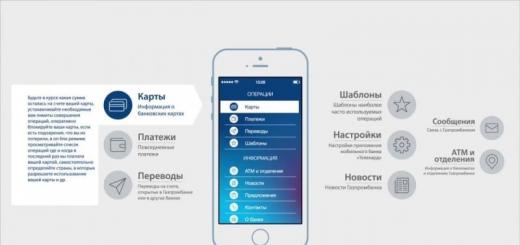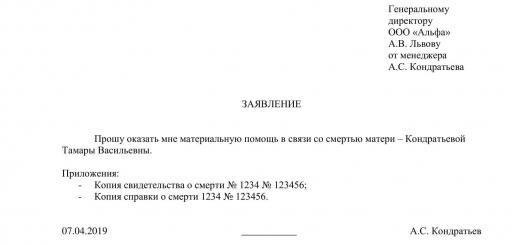7. The period of return (reimbursement) of investments (pbp). Comprehensive evaluation of investment efficiency.
The period of return (reimbursement) of investments is defined as such a payback period at which the total discounted income is equal to the total discounted investment.

Obviously, in this case, the value of NPV=0.

The value of the PBP indicator is determined by summing up the cumulative total cash flows until NPV is zero.

Condition of investment efficiency for this indicator:
PBP< T
The PBP indicator makes it possible to judge not only the overall efficiency or inefficiency of investments by comparing with the value of the calculation period, but also the degree of investment liquidity. Those. this indicator determines for what period of time the income distributed over time covers investment costs. This is especially important for firms that actively use borrowed capital for investment, as well as for firms with an unconventional liability structure. Very often, the PBP indicator is determined graphically (see the figure above).
The main disadvantage of the PBP indicator is that the income received outside the considered return period does not affect the payback period. The PBP indicator is actively used in cases where the economic situation is unstable, both at the macro and micro levels.
The above analysis of the main indicators of investment efficiency, taking into account the time factor, indicates that it is inappropriate to use these criteria separately. Therefore, in practice, most often these criteria are analyzed together (a comprehensive assessment of effectiveness is carried out).
Topic 2.4. Features of the application of investment efficiency criteria.
Some special cases of multivariate estimation. Choice of priorities.
Features of the application of criteriaNPV, IRR, BCR, PBP. Contradictions between the main criteria for investment efficiency.
Some special cases of multivariate estimation. Choice of priorities.
The use of the IRR, BCR, PBP criteria in some cases in practice leads to situations in which the interpretation of the results obtained is difficult.
For example, the decision on the effectiveness of the project when using individual indicators simply cannot be made. In such cases, it is necessary to calculate the remaining performance criteria, which makes it possible to make the overall picture more realistic. However, the task is often complicated by the fact that the main indicators of the effectiveness of investments often contradict each other. Therefore, investors are faced with the problem of choosing certain criteria (priorities). Let us further consider some special cases of multivariate evaluation, where the features of the application of the main indicators of investment efficiency are especially pronounced.
Features of applying the criteria npv, irr, bcr, pbp. Contradictions between the main criteria for investment efficiency.
It is known that the graphical dependence NPV(q) most often has the following form:

At the same time, it is easy to graphically determine the value of the IRR indicator. However, there are situations where a project has multiple positive IRRs. This occurs when additional investment costs are incurred during the billing period. In this case, cash flows can have different signs, and values net worth can be both positive and negative (in the case of non-classical cash flows).
The question arises, which of several IRR values should be taken as optimal? Sometimes, it is proposed to choose the smallest of these values, however, as practice shows, this can lead to incorrect conclusions.
Consider the following example. An investment project for the development of minerals is being implemented. Its implementation will require an investment of $5,000. It is assumed that the entire useful volume of fossil raw materials is mined in the first year and sold for $28,000; in the second year, only environmental works on soil reclamation are carried out, costing $28,000.
t=1 +28000 
To determine the IRR, do the following: 
Let's define the roots of this equation:  ;
; .
.
 NPV
NPV

Consider on this chart two points: q=20%,q=270%. It can be seen that for these two points the investment efficiency condition IRR>q is satisfied. However, at q=20%, NPV<0. также видно, что величинаNPV>0, at higher values of q (at q=270%). It turns out that it is beneficial for the investor to use a higher rate q, which, obviously, is contrary to common sense. For example, in the case of using borrowed capital.
Obviously, here it is impossible to talk about the optimal value of IRR. And the decision on the effectiveness of this project must be made using other performance indicators.
Let's consider one more example. The investment project has the following structure of cash flows during the billing period:
t=1 -16000 
Let's determine the value of the IRR indicator for this project. Let's proceed in the same way as the above example: 
Calculations show that this equation has no roots. Let's plot the dependence NPV(q):
N  PV
PV
It can be seen that it is impossible to determine the IRR indicator here. It is also obvious that this project cannot be effective in the entire range of rate changesq, although the graph clearly shows this. Obviously, to evaluate this project, additional criteria should be involved, or additional restrictions should be used.
 NPV
NPV
There are cases when the graph of this dependence has a different form:
 NPV
NPV
It reflects the case when additional investments are made during the billing period (perhaps several times in different years). Therefore, for classical cash flows, we can write that for t>PBP,NPV>0. only under this condition is the investment efficiency condition PBP Other indicators of investment performance should also be used to justify the optimal value of PBP. In particular, it is possible that with a larger value of PBP, better results are achieved in these indicators. There are also situations (when introducing additional restrictions) when a smaller value of PBP is chosen and it makes no sense to make additional investments in the project. In any case, the considered examples show that the main criteria for the effectiveness of investments often contradict each other. The final choice of priorities remains with the investor (preference for any criterion or group of criteria). Thus, as the above examples have shown, the use of the NPV, IRR, BCR, PBP criteria in many cases requires serious additional analysis, i.e. the search for the optimal variant often involves the use of additional criteria (or restrictions). The main purpose of investing in is to increase capital. But before you can make a profit, you first need to recoup the investment. Thus, it acts as a starting point when the project begins to generate profit for the investor. In this article, we will consider what is the payback period of investments, how to calculate the payback period of the project, and also analyze some features of the payback period. - this is the period of time that is necessary for the income generated by the investment project to fully cover the initial investment costs for the implementation of such a project. For example, if the investment amounted to 500 thousand dollars, and the predictive positive for the project is expected in the amount of 100 thousand dollars. annually, the payback period of the project will be 5 years. The payback period is one of the basic indicators used to assess the investment attractiveness of the project. Quite often, in addition to the payback period for the project under consideration, indicators such as and are also calculated. The payback period is often referred to as PP(from English. Pay-Back Period). If the investment project is expected to receive equal cash flows, then the simplest formula for calculating the payback period is applied: Where If the cash flows for the investment project are uneven, then the following formula is applied: In this case, the payback period is the minimum value of the time period ( n
) when the cumulative cash flows exceed the initial investment. Suppose that $500,000 was invested in the project, and the cash flows are formed by periods as indicated in the table below. Thus, the payback period of the project will be 4 years. cumulative cash flow in excess of the initial investment of $500,000 will be reached by the end of Year 4 to $505,000. The method of calculating the payback period is a fairly popular and convenient tool in investment analysis due to the simplicity of its calculation. However, this method has a significant drawback - it does not take into account the change in the value of money over time, which to some extent leads to distortion of the calculated data. To eliminate this shortcoming, they count. Where Consider an example of calculating the discounted payback period of investments, based on the data below. Cash flows will be discounted at a rate of 10% per annum. Usually, the discount rate is taken as the cost of debt capital (interest rate on a loan) or alternative investment options - an interest rate on a deposit, a bond yield, or some kind of “risk-free rate of return + risk premium”. The calculation shows that the decrease in the value of money over time leads to an increase in the payback period. So, if we take into account the usual (non-discounted) cash flows, then the payback of the project will be 5 years. And in case of discounting, it will increase up to 8 years. The discounted payback period of investments allows the investor to more correctly calculate the payback. In world practice, the average payback period for investments is 7-10 years. At the same time, in domestic practice (due to the instability of the financial and economic situation), most of the implemented investment projects had a payback period of 3-5 years. Longer payback periods carry increased risks for investors, which adversely affects the implementation of long-term investment programs. Having decided to engage in investment activities, it is important to understand what it is and what are its main differences from ordinary business. Another important point is the knowledge of how to correctly calculate the possible or real profit and build a strategy that leads to profit. If everything is properly planned by the investment company, the income from investment activities will always be large and will not take long. Investment income is the return on investment. It can be financial or other kind of profit. For example, gaining access to new technologies, expanding the customer base that will use the company's services or buy a manufactured product. In short, investment income is the income received from the investment activities of the company. Investment activity is the investment of an enterprise in production and other areas of its resources (financial or other, for example, intellectual, provision of equipment, etc.) in order to obtain maximum profit. Investment activity is similar to entrepreneurial activity, but has a number of differences. Key differences include: As for the payback time - this is, in fact, the main difference. If in ordinary business bets are made on a quick payback, the sooner the entrepreneur makes a profit, the better. And a good activity is considered to be the one that will start to make a profit as quickly as possible. In investment activity, the right decision will be a long-term perspective. The longer the company invests, the more profit it will receive. Investments in highly profitable investment projects should be one of the most important areas of the "policy" of any enterprise. Thus, holding shares of a company throughout its existence is more profitable than holding shares for a short period. In addition, the enterprise itself, in which the investment is made, should exist for as long as possible. It depends on the correct investment strategy whether the investment company will bring income or not, whether it will be stable and expectedly high. At the same time, in an ordinary business, although it is important to consider the prospects in advance, the income that will be received as soon as possible is also important. But the main difference is that in an ordinary business, in the future, only financial profits, such moments as access to new equipment, intellectual promotion, etc., are in the future. – is not a goal, but can be a “good”. In terms of risk, ordinary business is focused on activities with minimized risks, while investment activities are directed in the opposite direction. This means that the higher the risks, the higher the return on the investment portfolio. But here you need to competently approach the stage of investment planning and calculate everything in advance as much as possible. To, even with maximum risks, incur minimal losses. The main division of investments is made depending on where the funds are invested, and there are two types: real (or capital) investments and financial ones. Real or capital investments are invested in the modernization of enterprises, the expansion and modernization of enterprises, the opening of new funds. It is also an investment in the intellectual sphere, recruitment, training of the organization's personnel. Financial investments, unlike the first ones, are aimed at making a profit from stocks, securities, bonds. This type also includes deposit accounts in banks. Among all the listed types of financial investments, one can note investments in bonds, the yield of which is currently quite high. Investments can also be divided according to the duration of the project, they distinguish: Distinguish between investment activities and the form of participation in it directly by the investor. Distinguish between direct and indirect investment. In the first case, the investor himself chooses objects for investment and participates in the planning of the project and its implementation. With indirect participation, the investor acts through an intermediary. Still inexperienced figures resort to this form and receive a search for objects for investment by a third party, and he himself receives part of the intermediary's profit. This type of investment can be attributed to a bank deposit. If we divide investments according to the level of profitability, then we can distinguish: The first two include long-term investments with high and medium risks. Low-income deposits include deposits. There is a low level of risk, but the profit will also be small. A number of formulas are used to calculate return on investment. When calculating profitability, you need to remember that you cannot use only one criterion and be based only on them. To compile a more accurate picture of the return on invested capital, all formulas are used and a strategy is calculated for generally possible prospects and changes in the market and in the economy. D \u003d P - Z Where D is the income for the selected period; P- receipts for this period (for example, for a month); Z are the costs incurred during the period. D = 150 000 – 97 000 Investment income for January 2017 will amount to 53 thousand rubles. To calculate the investment return, the basic formula for net income can be considered: BH =∑D - K BH This is actually net income. ∑D- the amount of income for all periods of the project (each project defines several time periods); TO These are capital investments, those that have been made from the very beginning. The net income formula allows you to evaluate the whole picture and find out the profit for the entire investment period. But this formula does not reflect a clear picture. Since it should be borne in mind that over time, money is subject to inflation and the amount that was originally contributed at the end of the project may have a completely different value. For a more accurate display of the situation, another formula is used, taking into account the discount factor. The formula for calculating the discount factor: a =1 / (1 + E) Where, A- in fact, there is the required coefficient; E- this is the discount rate or discount rate for a certain period of time during which the income was received. The formula for calculating net present value (NPV): NPV =∑ (P-Z) * a -∑K*a Where, P- these are receipts for a certain period (actual income); Z- current costs for this period; TO- capital investments for a certain period; A is the discount factor calculated earlier. The main thing when using the formula is to remember that all components refer to the same period. The return on investment index is calculated in order to understand whether it is possible to cover the investment in the project based on current income. The ID is calculated by the formula: id =∑(P – Z)*а /∑K*a Where, ID is the yield index; P- receipts for a specific period; Z- costs for a specific period; A- discount coefficient; TO- capital investments. As a result of calculations, a number close to one will be obtained. The more it is 1, the more effective the project. The average rate of return ARR, which is also the average rate of return, allows you to calculate the average annual income that can be obtained from the implementation of an investment project. The calculation of the internal rate of return of an investment project is calculated using the following formula: ARR = ∑ BH / SZ*N Where, BH is net income NW- the sum of all costs (investments); N- the number of all billing periods. The internal rate of return of an investment project (IRR) is calculated using the following formula: GNI = ∑ (P-Z) / (1+Evn) Where, R- this is the result achieved for a certain period; Z- expenses for the same period; Evn is the internal discount rate. The following methods are needed to determine your own benefit and understand whether it is worth investing in a particular project at all. Using the above formulas, you can calculate the approximate profitability of the project at the very beginning. But even if the metrics are promising, periodically calculating fresh metrics will help keep the project under control. To identify actual indicators, you can use the already described formulas for NPV, ID and GNI. But there are also a number of additional ones. To determine the success of an investment project, the calculated rate of return (CRR) method is well suited. It allows you to calculate how much has changed, over a certain time period, the amount of investment in the project. RNP = SGP / PKZ * 100% Where, SGP is the average annual profit; PKZ- initial capital costs. Another version of the formula with slight changes: RNP = SGP / SKZ * 100% Where, VHC is the average capital cost. Net Present Value (NPV) is calculated using the formula: NPV = ∑ H*(1/(1+E)) + ∑ BH*(1/(1+E)) Where, Z– investment costs; E- discount rate; BH- net income for the period of use of the project. All indicators are taken for a certain step of the billing period. If the indicator is positive, the project will meet expectations and be profitable, moreover, the higher the indicator, the more profitable the business. The calculation of the profitability of the project (RP) allows you to determine the feasibility of the venture. Having calculated it according to the formula, you get an indicator close to one, the higher it is 1, the more profitable the investment. RP = ∑ BH / (1+E) / ∑ 1/(1+E)) Where, BH- this is the net income for a certain calculation step, and the amount of PV is the income for the entire period of the project; E is the discount rate. Using all the above formulas, you can calculate the profit from the investment project. In addition, find out at the very beginning how much, in general, this undertaking will be cost-effective and expedient. (votes: 1, average: 5.00 out of 5) Today I want to discuss a rather important question: what is investment? In my opinion, it is very dangerous to switch to the practice of investing without knowing the theory, therefore, any person who wants to become an investor and receive passive income, first of all, must clearly understand what exactly he is striving for. In this post, I will describe essence of investment, their difference from other similar economic categories, I will tell you what are types of investments. So what is investment. The essence of investment. Investments- this is an investment of monetary or tangible assets in various projects and financial instruments in order to obtain passive income. Investor is a private person or business entity making investments. Traditionally, the concept of “investment” was identified only with long-term investments of capital and other assets, but recently, due to the unstable economic situation in the world and the country, the long-term factor is gradually losing its relevance. Investment object- this is the project or asset in which the investor invests his capital. Subject of investment This is the investor. Investment capital is, accordingly, the capital that is invested. Investment income- this is the passive income that the investor receives from his investment. Investment period (investment period)- this is the period for which the investor plans to invest his capital. In some cases, it may not be determined, or investments may be made on an ongoing basis (forever). Payback period- this is the period for which the investment income will be equal to the amount of investment capital. Payback period and investment period are not the same thing! In other words, investing is the art of increasing personal capital, it is the ability to make your money bring you new money. I specifically called investing art. The fact is that, in my opinion, learning to invest wisely is not so easy. You can read a lot of literature on investing, invest the money as recommended by the most successful investors who have earned millions of dollars on it, and go bust. Just like, for example, you cannot learn to drive a car by reading a lot of books on learning to drive, or you cannot become an opera singer by reading how to sing correctly. Therefore, I believe that investment is really an art, which not everyone can learn. And the learning process here requires not only theoretical, but also practical, including inevitable mistakes and losses. In order to visualize what investment is, I will give an example. Let's say a man buys a hen that lays eggs for him. A person sells all laid eggs and earns on it. In this example: - a person is an investor, a subject of investment; - a chicken is an investment object, an investment asset; – chicken cost – investment capital; - proceeds from the sale of eggs - investment income; - the period of the chicken's life - the investment period; - the period for which the proceeds from the sale of eggs will equal the cost of the chicken - the payback period of investments. Please note that the chicken must be looked after, fed, so that it lays eggs better, both quantitatively and qualitatively. To sell eggs, you also need to make some effort. However, all this is much simpler than if a person had to somehow carry the eggs himself. Profitability and risk of investments. The investment process is always inextricably linked with two important characteristics: 1. The level of profitability. 2. Level of risk. Moreover, these characteristics are directly dependent on each other. The higher the expected level of return on investment, the higher the risk of investment, and vice versa. The essence of investing always involves risks. Absolutely risk-free investments do not exist at all! Therefore, if you are told that a project does not involve risks, they simply want to deceive and mislead you. The exact return on an investment is usually never known, so one can only speak of projected returns. In addition, in many cases, the return is not guaranteed at all, as is the return on investment, so the investor invests at his own peril and risk, based on the predicted level of return. The main task of the investor is to choose such investment objects that would optimally combine these two characteristics: the level of profitability and the level of risk. It is generally pointless to invest in super-risk projects with a low level of return, and in projects where the risk of investing in which is minimal, but the return is close to zero, too. Investment portfolio. To protect personal capital from losses, it is much better to invest not in one specific asset, but in several diverse ones, thereby creating an investment portfolio and spending. Investment portfolio (investment portfolio) is the total of all investments of one investor. The more investment objects the investment portfolio includes, and the more diverse they are, the more the investor's capital is protected from losses, because if one of the investments is lost, the rest will give a profit that will cover the loss. In addition, the wider the investment portfolio, the less likely it is that all investments will “burn out” at once. Investments have something in common with lending and capital investments, but these economic categories are still different from each other. Let's analyze these differences in more detail. The difference between investment and lending. The investment process has much in common with the lending process. In both cases, the investor or creditor transfers his capital to another entity for a certain period of time, planning to receive passive income from this. But there are also significant differences: - Lending implies a mandatory return of the issued loan, but investments do not, they may not return, the investor acts at his own peril and risk; - Lending assumes a precisely established profitability, indicated in the loan agreement, while investment income is a value, as a rule, inaccurate and predictable; - Lending in most cases involves the payment of interest on the loan immediately, from the first month of using the loan, and investment income may begin to flow after a much longer period; - The loan must be repaid, regardless of whether the project being financed will bring profit, and investments will start to generate income only if the investment project turns out to be profitable. The difference between investments and capital investments. Investments also have much in common with capital investments, but here, too, there are significant differences: - Capital investments generally do not imply a return on invested capital, despite the fact that they also have their own payback period, and investments are assumed; – Capital investments are made in fixed assets (buildings, structures, equipment, transport, etc.) and in large volumes, and investments can be made in any assets and in any volume. In principle, this is the main thing I wanted to say about the essence of investments, and now I want to consider the main types of investments. Types of investments. Depending on the various parameters, different classifications of investments can be carried out. Types of investments by investment object. 1. Real investment:
– investments in tangible assets (investment in real estate, equipment, transport, land, construction, reconstruction, etc.); - investments in intangible assets (investment in intellectual property: licenses, patents, trademarks, copyrights, scientific developments and research, education, advanced training, etc.); 2. financial investments:
– direct investment (investment of capital in an enterprise in order to be able to influence its activities, for example, the acquisition of a package of securities that gives the right to vote); - portfolio investments (investment in securities, mutual funds, enterprise funds solely for the purpose of obtaining passive income in the form of a share of the company's profits); 3. Speculative investment- investing in securities, currencies, precious metals, impersonal goods listed on world exchanges (oil, gas, grain, metal, etc.) solely for the purpose of speculative earnings on changes in the value of these assets. Types of investments by investment period. 1. Long-term investments (for a period of more than 3 years); 2. Medium-term investments (for a period of 1 to 3 years); 3. Short-term investments (for up to 1 year). Types of investments according to the form of ownership of the investor. 1. Public investment; 2. Commercial investments; 3. Mixed investments; 4. Private investment. Types of investments by region. 1. Investment within the country (domestic investment); 2. Foreign investments. Types of investments according to the risk level of the investment strategy: 1. Conservative investments; 2. Moderate investment; 3. Aggressive investments. There are other classifications of investments, but I think these types will suffice. Moreover, on the Financial Genius website, we will only talk about some of these types. So, we will be interested in private investment by form of ownership, as well as financial and speculative investment in the investment object. As with any responsible business, and even more so with the need to invest personal capital, the investment process requires a competent and professional approach, which always begins with the study of theoretical foundations. However, you must understand that investment theory alone is not enough for successful money management, although it can certainly become a good foundation for future practice. That's all I wanted to say today about the essence and types of investments. In conclusion, I want to add that investing today is, in my opinion, the only chance to pass, reach a good level of passive income and become financially free. Many successful investors in the world say the same, for example, Robert Kiyosaki in his book. I will end with this. After you have mastered the essence of investing, you can move on to studying more complex articles on investing, and, of course, gradually begin to apply the knowledge gained in practice. I wish you successful and profitable investments! Stay tuned - this site will help you manage your personal finances effectively and become a successful investor.
What is the payback period of investment?
Methodology for calculating the payback period of investments
PP(Pay-Back Period) — payback period, years;
IC(Invest Capital) - initial investment costs in the project;
CF(Cash Flow) is the average annual positive cash flow generated by an investment project.
Period, years
Investment in the project
Project cash flow
Cumulative cash flow
0
500 000
1
80 000
80 000
2
120 000
200 000
3
145 000
345 000
4
160 000
505 000
5
170 000
675 000

DPP(Discounted Pay-Back Period) - discounted payback period of investments;
IC(Invest Capital) - the amount of initial investment;
CF(Cash Flow) - cash flow generated by the investment project;
r- discount rate;
n- duration of the project.

Key differences between investments and regular business



current income
net income
Discount Factor Calculation
Discounted Income
Yield Index
Average and internal rates of return
Methods for determining actual financial indicators
Estimated rate of return
NPV










